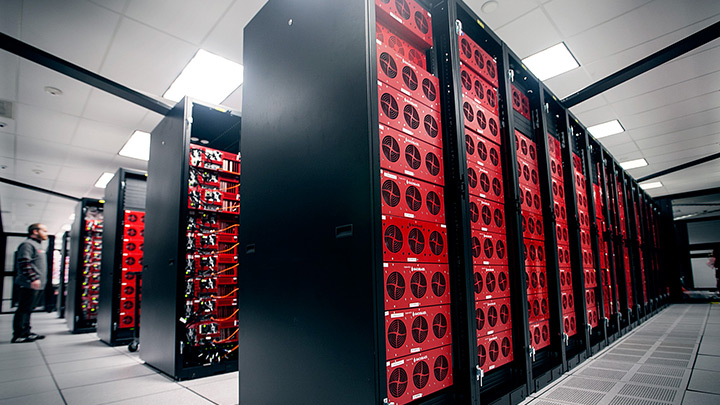
Backblaze now has 150 petabytes of customer data safely stored by our cloud backup service and waiting to be restored by our customers when requested. This customer data is stored encrypted on 980 Backblaze Storage Pods which contain 44,100 data hard drives of sizes ranging from two to six terabytes. Each week, new Storage Pods come online with either four or six terabyte drives installed depending on their configuration. Continuously adding Storage Pods allows us to stay several months ahead of the demand in case we have another Thailand drive crisis or similar surprise.
Trying to comprehend 150 petabytes of anything can be daunting. In simple mathematical terms it is 150,000,000,000,000,000 bytes or 150 followed by 15 zeros. OK, maybe that doesn’t help very much, so let’s just start at the beginning…
Bit
-
- : a binary decision of either 0 or 1.
Byte
-
- : 8 bits
Kilobyte
- : 1,000 bytes
- Expressed as KB or K
- Example: I have a 360K floppy disk.
Megabyte: 1,000 kilobytes
- 1,000,000 bytes
- 1 million bytes
- Expressed as MB or M
- Example: The photo on my computer is 3MB.
Gigabyte: 1,000 megabytes
- 1,000,000,000 bytes
- 1 billion bytes (short scale)
- 1 milliard or a thousand million bytes (long scale)
- Expressed as GB or G
- Example: I have 8GB of random access memory in my laptop.
Terabyte: 1,000 gigabytes
- 1,000,000,000,000 bytes
- 1 trillion bytes (short scale)
- 1 billion bytes (long scale)
- Expressed as TB or T
- Example: I purchased a 3TB external hard drive for my computer.
Petabyte: 1,000 terabytes
- 1,000,000,000,000,000 bytes
- 1 quadrillion bytes (short scale)
- 1 billiard or a thousand billion bytes (long scale)
- Expressed as PB or P
- Example: Backblaze has 150 petabytes of customer data storage.
Note: Short scale and long scale are two of the naming systems in use today used to name large numbers.
Counting doesn’t end with petabytes, there are still exabytes, zettabytes, yottabytes, xenottabytes, and wholelottabytes after that, but we’ll cover those when we get there. To be clear, all of this is in decimal form. Some people (geeks) like to point out that a real kilobyte is actually 1024 bits in binary, so for example a petabyte is 10245 in binary instead of 10005 in decimal. Since humans are reading this post, we’ll stick to decimal.













 10 Billion Files Restored and Counting…
10 Billion Files Restored and Counting…